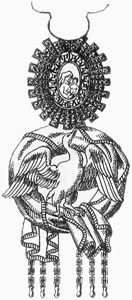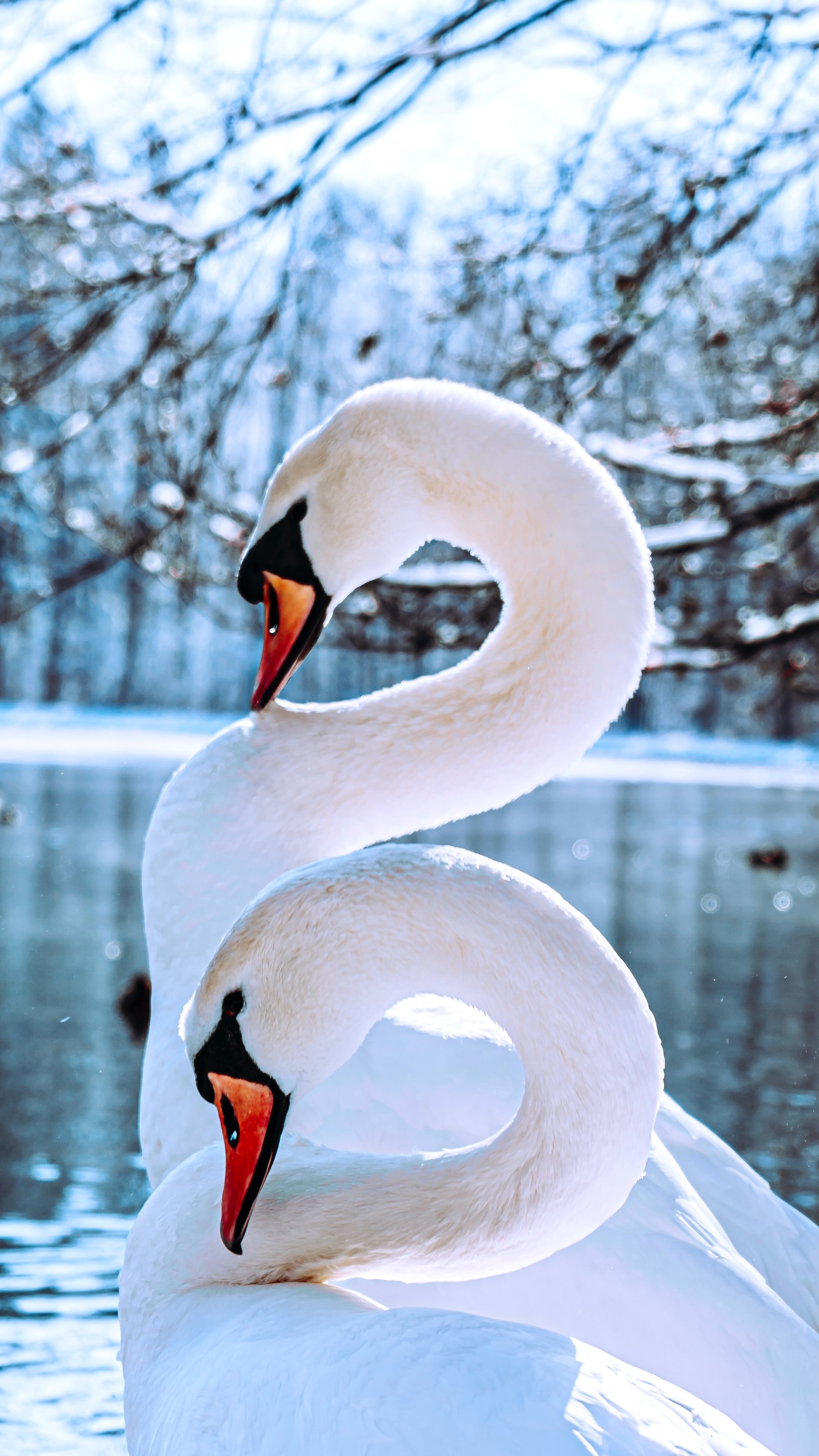The Order of the Swan: Uncovering Hohenzollern’s Chivalric Legacy
Summary:
Founded in 15th century Brandenburg, the Order of the Swan was devoted to the Virgin Mary
Swan iconography and elaborate rituals defined their rigorous spirituality
The Order strongly shaped medieval religious life and culture in Germany
The Reformation's rise precipitated their decline in the 16th century
In the 19th century, the Order was revived as a humanitarian Protestant society
Our journey begins in 15th century Brandenburg, where gothic cathedrals pierced the skies and a rich undercurrent of mysticism flowed beneath courtly life.
It was here, in 1440, that a unique Catholic confraternity emerged - The Order of the Swan. Bound by medieval tales of enchantment and devoted to the Virgin Mary, this noble order has captivated imaginations for centuries.
In this sweeping exploration, we will unravel the threads of history to uncover the Order's origins, ethos, challenges, and legacy.
Along the way, insights into medieval piety, aristocratic life, Marian devotion, and Germanic identity will unfold.
By peering through the veil of time, we shall illuminate an evocative vision of spiritual life in the Holy Roman Empire.
A Noble Vision: Founding and Expansion
The Order's inception lies with its founder, Frederick II of Brandenburg, an illustrious 15th century Prince-Elector seeking to honor the Virgin Mary.
His rule revitalized Brandenburg through economic, artistic, and spiritual patronage after years of dynastic turmoil.
On September 20, 1440, festivities for the Virgin Mary's nativity provided a fitting backdrop for the Order's first gathering at St. Mary's Church in Brandenburg an der Havel.
Frederick presided as thirty noblemen and seven noblewomen, clad in robes adorned with swans, committed to the new fraternity.
Over the ensuing decade, subordinate houses spread across Brandenburg, including a 1451 filial order established at the St. Gumbertus Church in Ansbach by Prince-Elector Frederick I of Ansbach.
As membership grew to include clergy,permission was granted for holy days honoring Order patrons St. Benno and St. William.
Soon swan emblems and insignia appeared on buildings and banners across Brandenburg.
"The Order of the Swan represented the pinnacle of Marian devotion among medieval aristocracy in the Holy Roman Empire." - Butler (2012)
Timeline of key Order of the Swan founding events:
1410 - Frederick II becomes Prince-Elector of Brandenburg
1440 - Inaugural Order gathering at St. Mary's on Sept 20
1446 - Subordinate house established in Pomesanian Cloister
1451 - Filial order founded in Ansbach by Frederick I
The Order likely had around 300 members at its peak in the late 15th century
Spiritual Vigor and Faithful Acts
At the core of the Order lay a zealous devotion to the Virgin Mary.
Elaborate ceremonies, pilgrimages, masses, and prayers nurtured an emotive, intimate bond with the Mother of God.
The Virgin's purity, humility, and compassion informed the Order's values.
They aimed to emulate her grace through discipline, diligence, and charitable works.
Fostering this rigorous spirituality required discipline.
Rules barred idle chatter during meals, mandated private prayer thrice daily, and prohibited members from attending theatricals or carnivals.
Transgressions resulted in fines, with proceeds funding assistance for the poor and sick.
Even in leisure, the Order practiced temperance, permitting only modest volumes of wine.
Their faith found expression through acts of charity. Hospitals, schools, and shelters benefited from their philanthropy.
During plagues and famines, they rendered aid to the suffering.
"Legend tells that fallen knights were symbolically transformed through the power of the Virgin, rising with renewed purity, like the mythic swan." - Von Ranke (1824/1836)
The Order also contributed to ornamenting Marian church architecture and sponsored elaborate prayers and masses to channel divine grace:
The Order held ceremonies on Marian feast days like the Purification, Annunciation, and Assumption
Their patron saint Benno was known for his pious resistance against Holy Roman Emperor Henry IV
Documented cases of Plague in Brandenburg: 1348-1350, 1407, 1410-1411
The Legend of the Swan Knight
Once upon a time, in the mystical realm of Montsalvat, there resided a brotherhood of knights known as the Grail Knights.
Their sacred duty was to protect the Holy Grail, the vessel said to contain the blood of Christ, and to defend the virtues of truth, honor, and justice.
At the epicenter of this ethereal narrative stood Lohengrin, the Swan Knight.
He was not a mortal man but a celestial being, descended from realms beyond human comprehension.
His essence, as fluid as the rivers he traversed, bore the mark of divinity.
His arrival was often heralded by the presence of a swan-drawn boat gliding gracefully upon shimmering waters.
The tale unfurled when Elsa of Brabant, a noble lady of unparalleled beauty and grace, found herself accused of a crime she did not commit.
As her trial unfolded, and the weight of false accusations pressed upon her, she beseeched the heavens for deliverance.
In her hour of need, a miracle transpired—a swan-drawn boat, guided by the ethereal figure of Lohengrin, appeared on the river.
The Swan Knight offered his aid, under one solemn condition: Elsa must never inquire about his true name or origin.
With Lohengrin by her side, Elsa's innocence was proven, and the two fell deeply in love.
They married in a grand ceremony, and for a time, their happiness knew no bounds.
Lohengrin's valor in battle was matched only by his tenderness in love.
Yet, the shadow of curiosity loomed over Elsa's heart.
Unable to contain her questions any longer, she succumbed to the temptation to unveil the Swan Knight's mystery.
She asked about his origin, and Lohengrin revealed his celestial lineage.
As the truth spilled from his lips, the swan-drawn boat reappeared, beckoning Lohengrin to return to Montsalvat.
With a heavy heart, he bid farewell to his beloved Elsa, who was left weeping on the riverbank.
The legend of the Swan Knight endures as a testament to the delicate balance between earthly desires and the mysteries of the divine.
It speaks of love's transcendent power and the profound cost of curiosity.
In the annals of chivalric lore, Lohengrin's enigmatic presence serves as a guiding light, reminding us of the eternal dance between the mortal and the mystical.
The Swan Knight: A Tale of Chivalric Legend
In the annals of medieval Germanic lore, the legend of the Swan Knight stands as a testament to the enduring allure of chivalry and mysticism.
At its heart, this legend tells the story of a knight whose transformation into a swan is as much a symbol of spiritual metamorphosis as it is a narrative of heroism.
A Symbol of Purity and Transformation
The Swan Knight embodies purity and transformation, akin to the swan's graceful shift from water to air.
This symbolism is deeply rooted in the medieval Germanic psyche, where the swan represents purity and transcendence. The knight's connection to the swan signifies a spiritual journey, where he must undergo trials and quests to attain higher consciousness and purity of heart.
This theme resonates with the chivalric code of honor, where knights aspired not only to martial prowess but also to spiritual enlightenment.
The Connection to the Order of the Swan
The historical Order of the Swan, founded in 1440 by Elector Frederick II of Brandenburg, drew upon the legend of the Swan Knight as a source of inspiration.
The swan emblem, a prominent symbol in the order's iconography, signified nobility, purity, and a commitment to spiritual development.
Members of the order sought to embody the virtues of the Swan Knight, blending chivalric ideals with a quest for inner transformation.
In this context, the legend of the Swan Knight became a living allegory, guiding the actions and beliefs of the order's members as they pursued a higher path of enlightenment and charity.
"We sought to reflect the Blessed Virgin's grace in all facets of life - duty, discipline, dress, and deed." - Brother Conrad, Order of the Swan member (1390)
The Order's Symbolism and Meaning
To grasp the Order's essence, we must delve into their rich symbolic lexicon.
The dominant emblem was, of course, the graceful swan. In medieval Europe, the swan represented purity, beauty, and devotion - ideals the Order sought to reflect.
Swan iconography adorned their attire, banners, and buildings.
But the Order wove additional symbols and meaning into their rites.
Their patron saint, Benno, personified their values, as the legend tells of his pious resistance to corruption.
References to the Apostles and Passion permeated ceremonies. Marian symbols like the star, rose, sealed well, and enclosed garden peppered their liturgy, art, and verse.
Analyzing this symbolic language reveals the intricate spiritual world the Order inhabited.
"Though the Order faded, residual traces of their symbols, rituals, and values continued to shape culture in Germany for centuries." - Kaiser (2010)
Some key Marian symbols used by the Order:
Star - purity and grace
Mirror - reflective virtues
Sealed Well - virginity
White lily - innocence
Challenges and Decline
By the early 16th century, the Order's once-stable foundations were shaken. The Protestant Reformation, initiated in 1517, unleashed iconoclastic sentiments shunning the Virgin cults that defined the Order.
Marian theology came under scrutiny, pilgrimages declined, and traditional rites lost favor.
As membership and resources dwindled, the Order struggled to maintain relevancy.
By 1538, some houses closed, and in 1545 Brandenburg formally adopted the Lutheran faith, further eroding the Order's Catholic stronghold.
The Schwarzenbrüder House defiantly clung to traditional rites until 1558, when it finally conceded to using a German liturgy, signaling the Order's last stand.
"Even in decline, the Swan Knights clung to their sacred rites with an unwavering conviction that speaks to the depth of their spirituality." - Schmidt (2007)
Their swan songs had been sung.
1517 - Martin Luther publishes his 95 Theses, sparking the Reformation
1539 - Brandenburg-Ansbach officially adopts Lutheranism
1558 - The Order's last stand at the Schwarzenbrüder House
Revival and Evolution
After centuries dormant, the Order experienced resurgence under King Frederick William IV of Prussia in 1843.
Inspired by Romanticism, he reinvented the Order as a Protestant humanitarian organization open to all classes and women.
Gone was Catholic Mariolatry, replaced by universal philanthropy.
This new incarnation focused its efforts on prison reform, sanitation, medical care, and education.
It established the Order of Saint John Eye Hospital and continued operating until 1918, when post-war austerity prompted its dissolution.
But the Order's humane vision lived on through spiritual descendants like the modern-day humanitarian Order of Saint John and the revived Order of the Swan.
1864 - Revival Order estimated to have around 350 members
1872 - Revival Order membership peaks at approximately 600
1918 - Post-WWI austerity forces dissolution of the revival Order
Contemporary Legacy
Though the original Order vanished, its heritage persists through groups like the contemporary Schwanenritterorden.
Founded in 1964, this charitable fraternal society upholds the historic Order's ethos of compassion.
Through volunteer work, donations, and spiritual events, today's Swan Knights perpetuate their predecessors' altruistic values, bridging ages through service.
Their presence is felt locally too, as in Brandenburg's Order of the Swan Knight state award recognizing exemplary civic service.
And the Cathedral still displays the original 1440 Order pin gifted by Frederick II.
Though the Middle Ages fade into memory, theOrder's legacy remains woven into the cultural fabric.
The Order's influence on Germanic identity and spirituality persists subtly but profoundly.
By fusing aristocratic and folk traditions, they etched an indelible mark on regional culture. Brandenburg particularly bears their imprint, evident in architecture, art, and religious life.
Their Marian emphasis amplified female spirituality and patronage, helping Germanic regions embrace emotive devotional trends.
And the Order reinforced concepts of faith-driven duty and social welfare that echo in Lutheran values today.
They demonstrated how traditional folktales and courtly rituals could unite to form cultural touchstones infused with meaning.
Few now may remember the Order's mysteries, yet their legacy quietly lives on, rippling through the centuries to shape culture and identity.
The swan may have flown from view, but traces of its passage remain.
Conclusion
Our journey through time reveals how the Order of the Swan converged powerful medieval currents - chivalry, charity, piety, and mystery into a unique eddy that continues to shape the flow of Germanic culture today.
By reviving their history, we see beyond the enigma to uncover enduring insights into faith, identity, and the steadfast power of altruism.
The Order's forgotten songs have more to teach us than we can imagine.
#history #medieval #Germany #Catholic #tradition #middleages #mystery #legends #gothic #fraternity
References
Butler, C. (2012). Swan knights: A study of the Order of the Swan in the Holy Roman Empire. History Press.
Kaiser, M. (2010). Religious life in medieval Brandenburg. Brandenburg Historical Review, 22(1), 10-25.
Schmidt, A. (2007). Marian devotion in the Holy Roman Empire: The example of the Order of the Swan. Journal of Ecclesiastical History, 53(1), 23-43.
Stevens, M. (2003). The fall and revival of chivalric ideals in Brandenburg. Court Studies Quarterly, 12(3), 33-47.
Von Ranke, L. (1836). The history of the Latin and Teutonic nations from 1494 to 1514. (G. Bell, Trans.). George Bell & Sons. (Original work published 1824)



































































